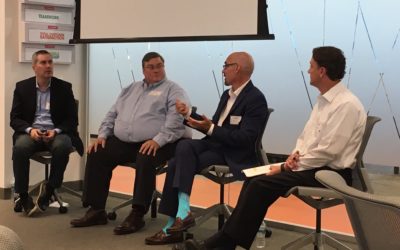
Recently Brian Shea had the opportunity to speak at Boston Society for Information Management (Boston SIM) CIO Roundtable on CRM. It was a great event attended by CIOs from the greater Boston business community.

Here’s an overview of themes from the discussion:
The most common problem we see with CRM systems (and Salesforce systems in particular) is that they’ve been made too complex because of incorrect or unnecessary customization. This complexity can manifest itself in a number of ways:
- Unreliable data: data that’s missing, inconsistent or incorrect
- A system that is difficult to use: internal users have a difficult time entering or retrieving data in the system, and end up doing unnecessary or repetitive manual work.
- A system that is difficult to change: it’s difficult to add new features, integrations or even write new reports)
- Lack of adoption: people end up using offline solutions (like spreadsheets) to store data that should be stored in the CRM
- Poor Customer/Constituent Experience: your team has a difficult time creating a great customer experience because they don’t have the tools or data they need.
Complexity often comes from a poorly defined process
No one sets out to build a CRM that’s overly complicated and difficult to use. So why does it happen? A big reason is that the system doesn’t accurately reflect the process that the organization uses to interact with its customers/constituents or (even more common) the customer experience process was never defined in the first place. Defining a solid CRM process allows your team to do the following things that are critical to building and maintaining an effective CRM:
- prioritize objectives and features
- define the data that needs to be captured in the system (and just as important, which data doesn’t need to be captured)
- define the KPIs that are important to your organization
- define how constituents will interact with your organization
- define how internal users will use the system
Subscribe to new articles about Salesforce + FinServ
We write about Salesforce for the Financial Services Industry. It’s Free. No Spam. Unsubscribe whenever you want.
